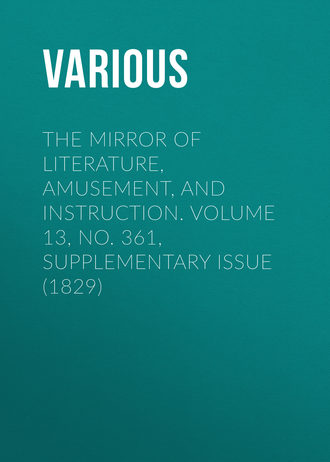 полная версия
полная версияThe Mirror of Literature, Amusement, and Instruction. Volume 13, No. 361, Supplementary Issue (1829)
4
Francis II. of Germany abdicated 1806, and took the title of Emperor of Austria.
5
At the close of the sixteenth century, according to Kotobeddyn, the whole plain of Arafat was cultivated.
6
The Mahmal (an exact representation of which is given by D'Ohsson) is a high, hollow, wooden frame, in the form of a cone, with a pyramidal top, covered with a fine silk brocade adorned with ostrich feathers, and having a small book of prayers and charms placed in the midst of it, wrapped up in a piece of silk. (My description is taken from the Egyptian Mahmal.) When on the road, it serves as a holy banner to the caravan; and on the return of the Egyptian caravan, the book of prayers is exposed in the mosque El Hassaneyn, at Cairo, where men and women of the lower classes go to kiss it and obtain a blessing by rubbing their foreheads upon it. No copy of the Koran, nor any thing but the book of prayers, is placed in the Cairo Mahmal. I believe the custom to have arisen in the battle-banner of the Bedouins, called Merkeb and Otfe, which I have mentioned in my remarks on the Bedouins, and which resemble the Mahmal, inasmuch as they are high wooden frames placed upon camels.









